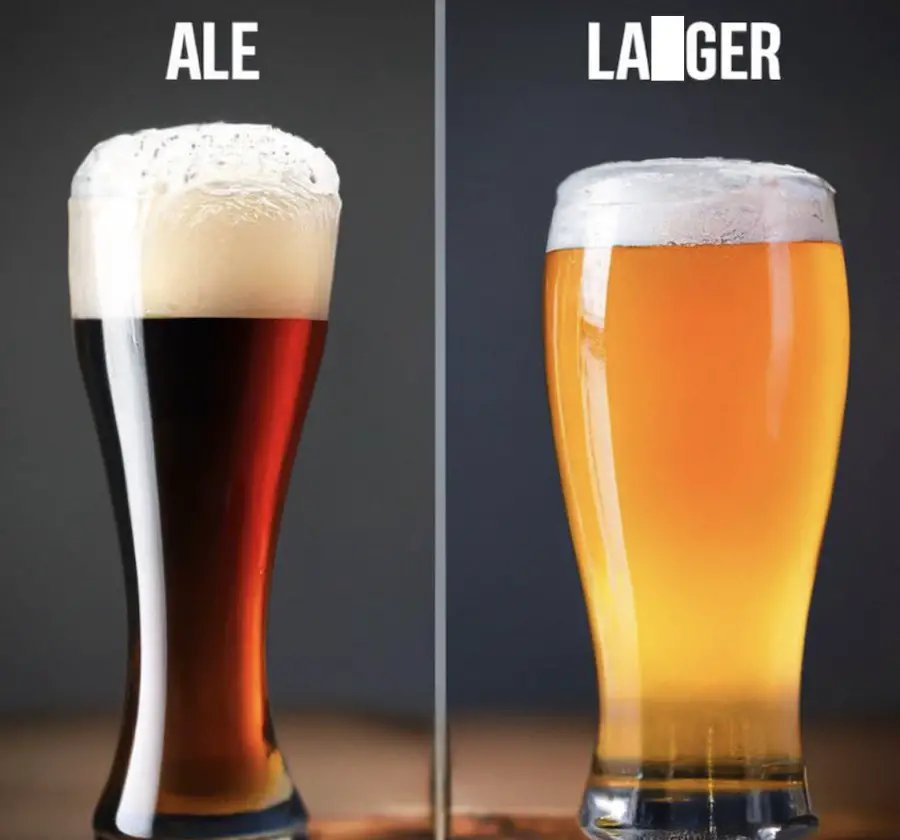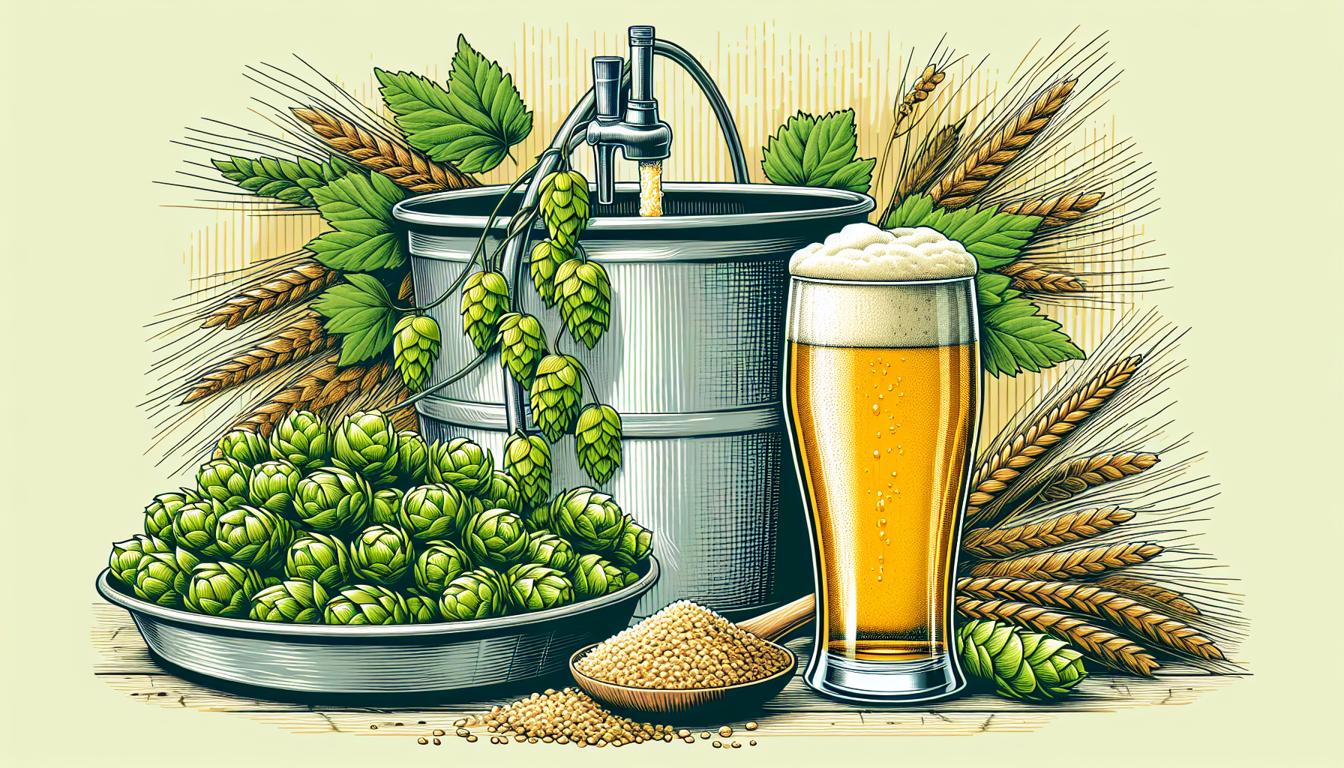The world of beer is vast and varied, with countless styles and flavors to explore. One such style that has captured the attention and taste buds of many a beer enthusiast is the lambic.
To answer the main question concisely: A lambic is an ale, as it is fermented with top-fermenting yeast, along with wild yeast and bacteria that are native to the region where it is produced.
Known for its distinctive sourness, complexity, and often fruity character, lambics are a unique and intriguing category of beer. But the question often arises: is a lambic an ale or a lager?
In this blog post, we’ll explore the world of lambics, dive into their history and brewing process, and ultimately answer that burning question.
1. The Origins of Lambic
The lambic style originated in Belgium, specifically in the Senne Valley region near Brussels. This area has a rich brewing tradition that dates back to the Middle Ages, and lambics have been produced there for centuries.

The unique microclimate and geography of the Senne Valley, with its particular mix of wild yeast and bacteria, is what gives lambics their distinctive character.
2. The Traditional Lambic Brewing Process
The process of brewing a traditional lambic is unlike any other beer style. To start, brewers use a blend of malted barley and unmalted wheat in a process called turbid mashing. This method involves heating the grains at various temperatures and continually adding water to create a thick, cloudy mash. The resulting wort is then boiled with aged hops, which contribute preservative properties without adding much bitterness.
After boiling, the wort is transferred to a large, shallow vessel called a coolship. Here, the wort is left to cool overnight, during which time it is exposed to the open air. This allows the wild yeast and bacteria native to the region to inoculate the wort, initiating the fermentation process.
3. Spontaneous Fermentation and the Role of Microorganisms
The key to lambic’s unique character lies in its spontaneous fermentation process. Unlike most beers, which are fermented with carefully selected strains of yeast, lambics rely on the naturally occurring microorganisms in the air to ferment the wort. This includes wild yeast strains, such as Brettanomyces, and various bacteria, such as Lactobacillus and Pediococcus, which contribute to the beer’s sourness and complexity.
4. Maturation in Oak Barrels
Once fermentation has begun, the lambic is transferred to oak barrels, where it will age and mature for anywhere from one to three years. During this time, the microorganisms continue to work their magic, breaking down sugars and producing a variety of flavor compounds. The oak barrels also impart some of their own character to the beer, adding layers of flavor and complexity.
5. Blending and Fruited Lambics
After the aging process, many lambics are blended together to create a more balanced and complex final product. This is known as a gueuze, a blend of young and old lambics that has been bottle-conditioned for further maturation. In addition to gueuzes, some lambics are also blended with fruit, such as cherries (kriek) or raspberries (framboise), to create a deliciously tart and fruity beer.
6. A World of Flavors
The combination of spontaneous fermentation, oak barrel aging, and blending results in a truly unique and diverse range of flavors in lambic beers. They can range from bracingly sour and funky to soft and fruity, with notes of hay, barnyard, leather, and earth. Each lambic is a product of its specific environment, the skill of the brewer, and the serendipity of nature.
7. Ale vs. Lager: The Basics
To understand why lambic is considered an ale, it’s important to know the basic differences between ales and lagers.

The primary difference lies in the type of yeast used for fermentation. Ales are fermented with top-fermenting yeast strains, which generally work at warmer temperatures and produce a wide range of flavor compounds. Lagers, on the other hand, are fermented with bottom-fermenting yeast strains, which work at cooler temperatures and typically produce cleaner, more neutral flavors.
8. Why Lambic is an Ale
So, given the differences between ales and lagers, why do we consider lambic an ale? The answer lies in the fermentation process. While lambics rely on wild yeast and bacteria for fermentation, many of the microorganisms involved are similar to top-fermenting ale yeast strains. Additionally, the fermentation temperature for lambics is typically on the warmer side, similar to that of ales. For these reasons, lambic is classified as an ale rather than a lager.
Conclusion
In conclusion, a lambic is an ale, due to its fermentation with top-fermenting yeast and the use of wild yeast and bacteria native to the Senne Valley region. This fascinating beer style showcases the power of spontaneous fermentation and the unique flavors that can be achieved through this ancient brewing process.
Here are 10 facts about lambics to further expand your knowledge:
1. Lambic is one of the oldest beer styles in the world.
2. The Senne Valley in Belgium is the only region where traditional lambic can be produced.
3. Lambics undergo spontaneous fermentation, relying on wild yeast and bacteria in the environment.
4. The turbid mashing process used in lambic brewing is unique to this style.
5. Aged hops are used in lambic brewing to add preservative properties without increasing bitterness.
6. Lambics are aged in oak barrels for one to three years, during which time they develop their distinctive flavors.
7. Gueuze is a blend of young and old lambics, which is bottle-conditioned for further maturation.
8. Fruited lambics, such as kriek and framboise, are made by blending lambic with fruit.
9. Lambics can range in flavor from sour and funky to soft and fruity.
10. Lambic is considered an ale due to its fermentation with top-fermenting yeast and wild microorganisms.
FAQs
What are the tasting notes of lambic?
Lambic typically exhibits tart, sour, and fruity flavors reminiscent of green apples, lemons, grapes, and apricots, with earthy, funky, and barnyard-like aromas.
Is lambic a sour ale?
Yes, lambic is a sour ale. It is a type of beer that is fermented with wild yeast and bacteria, which gives it a distinctive sour taste.
What is the difference between lambic beer and sour beer?
Lambic beer is a specific type of sour beer that is spontaneously fermented with wild yeast and bacteria in the Senne Valley region of Belgium, while sour beer is a broader category of beer that includes other styles that are intentionally soured through various methods, such as adding lactobacillus or brettanomyces yeast.
What style of beer is sour ale?
Sour ale is a style of beer that is intentionally brewed to have a sour and acidic taste, often achieved through the use of wild yeast strains or bacteria such as lactobacillus or pediococcus.
Is lambic beer like wine?
Yes, lambic beer is often compared to wine due to its complex flavors, aging process, and reliance on natural fermentation. Like wine, lambic beer is made from fermented fruit (in this case, sour cherries or raspberries) and can have a tart, acidic taste. Additionally, lambic beer is aged in oak barrels for extended periods of time, much like wine, which can enhance its flavor and complexity.
What is lambic beer similar to?
Lambic beer is a unique style of beer that is not very similar to any other beer style. It is characterized by its sour and tart flavor profile, which is achieved through spontaneous fermentation using wild yeast and bacteria.




